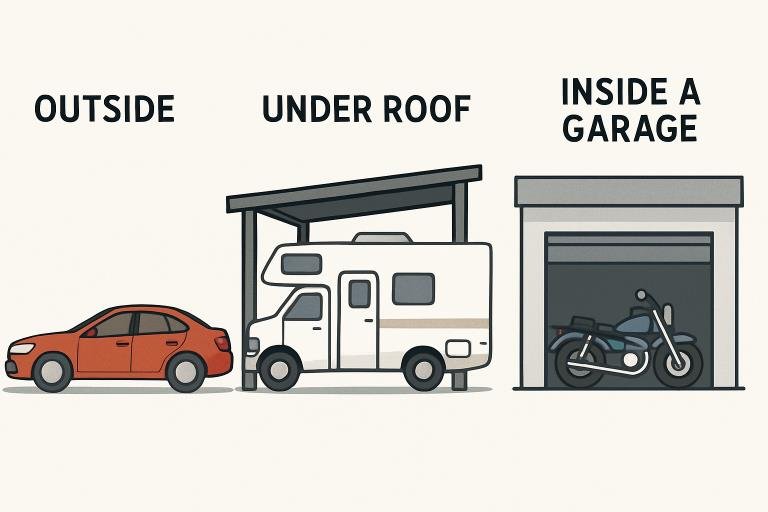Storing your vehicle doesn’t have to be an expensive undertaking. With some planning and research, there are plenty of ways to secure affordable vehicle storage while ensuring your needs are met. Whether you’re storing a car, RV, or motorcycle, the right approach can save you time, money, and stress. For those searching for flexible options, vehicle car storage are widely available to accommodate different vehicle types and budgets. The challenge is choosing the best facility and storage type for your requirements.
Before you sign a contract, it’s essential to assess what you’re storing and for how long. Understanding your needs will keep you from overpaying for features or space you won’t use. Storage facilities come in all shapes and sizes—urban locations are pricier but more convenient. In contrast, rural or suburban facilities often provide savings if you’re willing to drive a bit farther. Smart shoppers look beyond the monthly price tag, weighing security, amenities, and accessibility to find true value.
Assess Your Storage Needs
Start by determining exactly what you need to store and for how long. Is your vehicle a compact car, classic auto, motorcycle, or RV? The vehicle type and dimensions impact both the storage size required and likely cost. If you have a seasonal vehicle that only needs to be stored for winter or a short period, your needs will differ from someone seeking long-term storage for an RV or collector’s car. Having precise measurements and an accurate time frame in mind will help you avoid paying for surplus space or features.
Explore Different Storage Options
There’s no one-size-fits-all when it comes to storage. The three primary types are:
- Outdoor Storage:Typically, outdoor storage is the most budget-friendly option. It is ideal for short-term or less valuable vehicles but offers minimal protection from the weather.
- Covered Storage:More affordable than indoor storage, this option provides protection from sun, rain, and snow—ideal if you want a middle-ground price and moderate weather protection.
- Indoor Storage:The most secure and weatherproof option is also the priciest. It is ideal for high-value vehicles or those needing climate-controlled environments.
According to Consumer Reports, indoor storage options are growing in demand, especially for classic cars and RVs. At the same time, outdoor and covered parking remains the most accessible for those looking to save on costs.
Compare Prices and Amenities
After narrowing down a list of local facilities, compare prices and available amenities. Essentials to consider include:
- 24/7 access versus restricted access hours
- Climate control for sensitive vehicles
- On-site staff and security patrols
- Online account management and payment options
- Insurance options or requirements
Amenities can vary dramatically—some facilities offer bare, uncovered parking spots, while others provide fully enclosed, monitored, and climate-controlled units. Weigh the added features against their costs, considering what is truly necessary for your specific vehicle and usage needs.
Consider Location and Accessibility
Urban storage facilities are typically more expensive due to high local demand and real estate values. Venturing just a few miles out of town could lower your monthly rate substantially. However, balance these savings against your access needs: if you need frequent access, a distant location may not be practical, even if it’s cheaper. Facilities near highways or major roads may offer the best compromise between cost, security, and accessibility.
Look for Discounts and Promotions
Many storage providers run seasonal sales, offer web discounts, or reward long-term commitments with reduced rates. Ask about first-month deals, military or student discounts, and whether bundled services (such as insurance) are available at a lower cost. Being alert to promotions can shave significant dollars off your storage bill, particularly for your first few months. For more detailed tips on finding storage deals, check out this helpful guide on saving on self-storage from Consumer Reports.
Evaluate Security Measures
Security is critical when leaving your vehicle unattended, especially long-term. Look for facilities with gated entrances, round-the-clock surveillance, ample lighting, and on-site personnel. Higher security might slightly raise costs but greatly reduces risks of theft or damage, giving you peace of mind throughout the storage period.
Read Reviews and Visit Facilities
Research goes a long way—online reviews reveal real-world experiences, highlighting recurring issues like break-ins, poor customer service, or hidden fees. If feasible, visit the facility to inspect cleanliness, meet staff, and check the general upkeep of the grounds. Direct observation often reveals much more than a website can.
Understand the Contract Terms
When choosing a storage facility, carefully examine the contract before you sign. Scrutinize details about lease length, payment schedules, cancellation policies, and any penalties for early departure or late payments. Clarify insurance requirements and whether your vehicle is covered by their policy or your own auto insurance, as some providers require proof of coverage prior to storing your vehicle.
By systematically assessing your needs, researching facilities, comparing prices and features, and reviewing contracts, you can confidently choose affordable vehicle storage that protects your investment and fits your budget.



